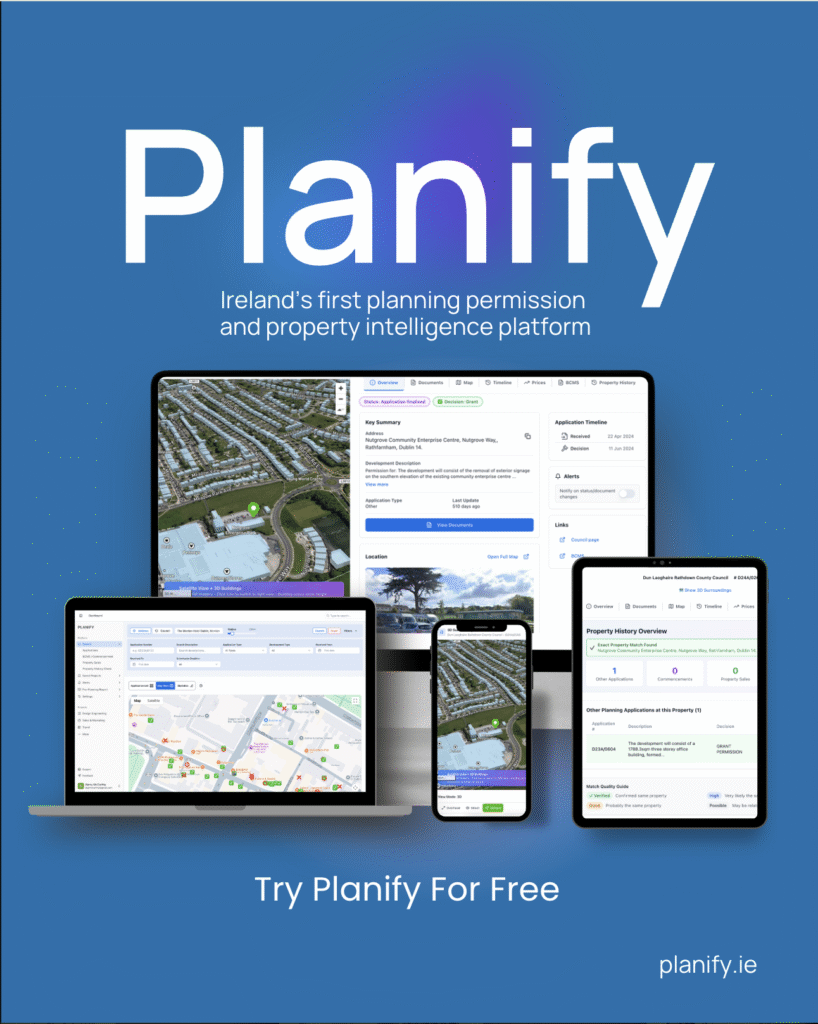Further Information
VS
Significant Further Information

Understanding Further Information Requests
Further information requests are a common part of the planning permission process in Ireland. They occur when a planning authority needs more details about a proposed development to make an informed decision. Understanding how to respond to these requests efficiently and effectively is crucial for applicants to navigate the planning system successfully. This guide will delve into the nature of further information requests, what they typically entail, and how to handle them.
A further information request is issued by the planning authority when the details provided in the initial planning application are insufficient for them to assess the impact of the proposed development fully. This request does not signify a significant issue with the application but rather indicates that the authority requires more clarity or additional details on certain aspects.
Common Areas Requiring Further Information
Further information requests can cover a wide range of issues, depending on the nature and complexity of the proposed development. Common areas that may prompt such requests include:
- Environmental Impact: Additional details on how the development will manage waste, conserve water, or protect local wildlife.
- Traffic and Access: More information on the expected traffic increase and how the development plans to manage access points and parking.
- Visual Impact: Requests for further visual aids, such as photomontages or 3D models, to better understand how the development will fit into the existing landscape.
- Materials and Design: Clarification on the materials to be used and any specific design features, especially if the development is in a conservation area or near historical landmarks.
- Neighbouring Amenities: Additional assessments on how the development might affect the light, privacy, or view of neighbouring properties.
Further Information (FI) Timeframes
When a planning authority issues a request for Further Information (FI), the applicant typically has 6 months to respond. It’s important for applicants to note that this period can be extended by up to an additional 3 months if agreed upon by both the applicant and the planning authority. Once the requested further information is submitted, the planning authority then has an additional 4 weeks to make a decision on the planning application. If the applicant fails to provide the requested information within the specified timeframe, the application may be deemed to be withdrawn.
Responding to Further Information Requests
Responding promptly and comprehensively to further information requests is essential. Here are steps to ensure an effective response:
- Review the Request Carefully: Understand exactly what information the planning authority is seeking. If anything is unclear, it may be beneficial to contact the planning officer directly for clarification.
- Gather the Required Information: This may involve conducting additional studies, creating new drawings, or compiling more detailed reports. It’s crucial to address each point raised in the request thoroughly.
- Consult with Professionals: Depending on the nature of the information requested, it may be necessary to engage with architects, engineers, environmental consultants, or other professionals to prepare the required details.
- Submit the Information Before the Deadline: Planning authorities typically set a deadline for the submission of further information. Missing this deadline can result in the application being deemed withdrawn, requiring a new application to be submitted.
- Keep Records: Maintain copies of all correspondence and submissions related to the further information request. This documentation can be crucial if there are any disputes or appeals later in the process.
After Submitting Further Information
Once further information has been submitted, the planning authority will reassess the application in light of the new details provided. The outcome can be an approval, conditional approval, or refusal of planning permission. If the decision is not favourable, applicants have the right to appeal to An Bord Pleanála.
Further information requests are a standard part of the planning permission process, serving as an opportunity to clarify and enhance your application. By understanding what these requests entail and responding effectively, applicants can improve their chances of securing planning permission.
Significant Further Information (SFI)
Significant Further Information (SFI) requests represent a pivotal moment in the planning permission process in Ireland, distinct from regular further information requests. These requests are made by planning authorities when the additional details required from an applicant have the potential to alter the development’s impact significantly. Understanding the nuances of SFI, its implications for your planning application, and how to navigate this process is crucial for developers and property owners. This guide will provide a comprehensive overview of Significant Further Information requests, including their purpose, typical contents, and the steps involved in responding effectively.
Understanding Significant Further Information Requests
A Significant Further Information (SFI) request is issued by a planning authority when the additional information needed from an applicant is substantial enough that it could change the development’s perceived impact on the environment, local infrastructure, or community. This contrasts with regular further information requests, which typically seek to clarify or provide minor details on the original submission without fundamentally altering the understanding of the proposed development.
Trigger Points for SFI Requests
SFI requests can be triggered by various factors, depending on the scale and nature of the proposed development. Common reasons include:
- Environmental Concerns: If the development poses potential significant effects on the environment that were not adequately addressed in the initial application.
- Traffic Impact: Substantial changes or clarifications to access routes, traffic generation, or parking arrangements that could affect local traffic flow.
- Public Health and Safety: Issues related to site contamination, flood risks, or other hazards that necessitate a more detailed examination.
- Visual and Community Impact: Significant alterations to the design, height, or footprint of the development that could affect the local landscape or community.
Significant Further Information (SFI) Timeframes
The process and timeframes for Significant Further Information (SFI) are slightly different due to the nature of the information being requested. Once an SFI request is issued and the applicant submits the required information, this often constitutes a material change to the application. As such, the submitted SFI usually needs to be advertised and subjected to a further round of public consultation, similar to the original application. This process includes a 5-week period during which the public can make submissions or observations on the revised application.
After the SFI and any associated public consultation are completed, the planning authority typically has an 8-week period to make a decision on the planning application. However, it’s important to note that the specific timeframes can vary depending on the complexity of the information requested and the extent to which it alters the original application. Applicants are advised to maintain close communication with the planning authority throughout this process.
Responding to SFI Requests
Responding to an SFI request involves a comprehensive process, given the potential implications for the planning application. Here are key steps to ensure an effective response:
- Thoroughly Review the Request: Understand the scope and specifics of the information required by the planning authority. This step may involve consultations with the planning officer for clarification.
- Engage Expert Consultants: Given the significant nature of the information requested, it may be necessary to involve architects, environmental consultants, traffic engineers, or other specialists to prepare the required documentation.
- Prepare Detailed Submissions: The response to an SFI request must address all points raised comprehensively, often involving detailed reports, revised plans, environmental impact assessments, or other technical documents.
- Public Consultation: Since SFI can significantly alter the development’s impact, the planning authority may require the revised details to be made available for public consultation. This process allows for community feedback and ensures transparency.
- Submit Within the Deadline: Adhere to the deadline provided by the planning authority for submitting the SFI. Failure to meet this deadline could have adverse effects on the application’s progress.
- Documentation and Records: Maintain meticulous records of all submissions and correspondence related to the SFI request. This documentation is crucial for reference throughout the remaining stages of the planning process.
After Submitting Significant Further Information
Once the SFI has been submitted, the planning authority will reassess the application in light of the new information. This reassessment may lead to the approval, conditional approval, or refusal of the planning permission. Given the substantial nature of the information provided, the decision-making process may take longer than for regular further information responses.
Significant Further Information requests are a critical aspect of the planning permission process, reflecting the need for a deeper examination of a proposed development’s impact. Successfully navigating an SFI request requires a thorough understanding of the planning authority’s concerns, engagement with expert consultants, and meticulous preparation of the response. For developers and property owners, effectively managing this process is
Conclusion
Significant Further Information (SFI) and regular further information requests are both mechanisms through which planning authorities in Ireland seek additional details on planning applications. However, they differ in scope and implications. Regular further information requests typically involve clarifications or minor details that do not fundamentally alter the understanding of the proposed development. These are often procedural and aimed at filling in gaps within the initial application. On the other hand, SFI requests are issued when the additional information needed has the potential to significantly change the perceived impact of the development on the environment, local infrastructure, or community. Responding to an SFI request often requires substantial revisions to the proposal, including new studies or assessments, and may trigger a new round of public consultation due to the potential changes in the development’s impact. Understanding these differences is crucial for applicants to effectively navigate the planning permission process and respond appropriately to the planning authority’s requests.




